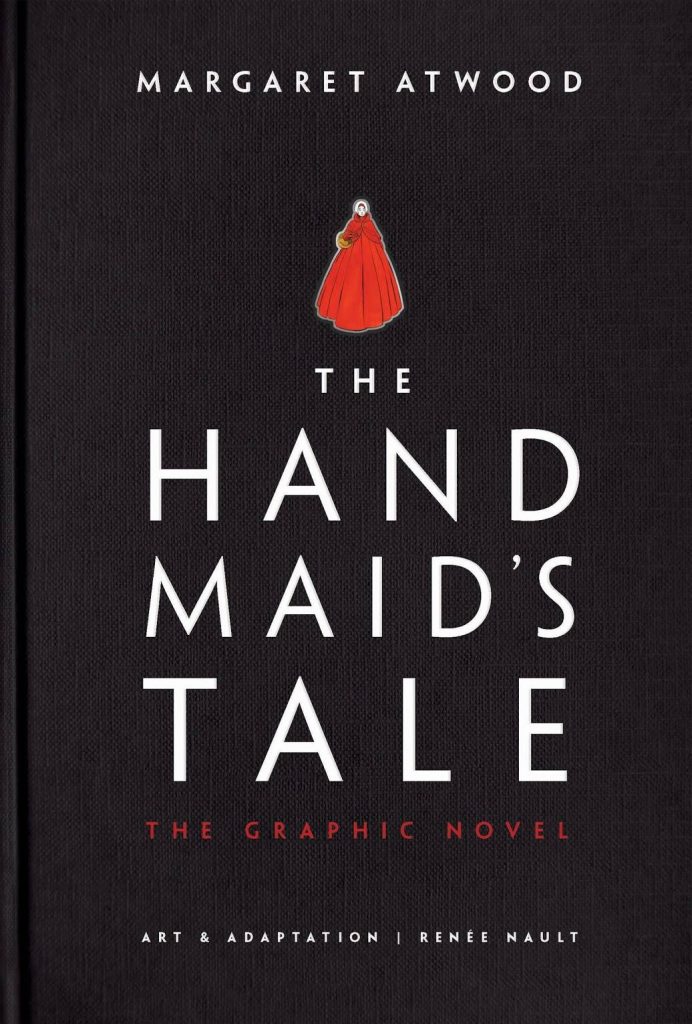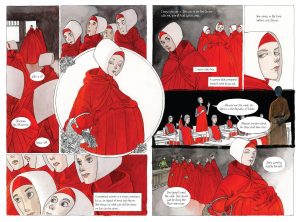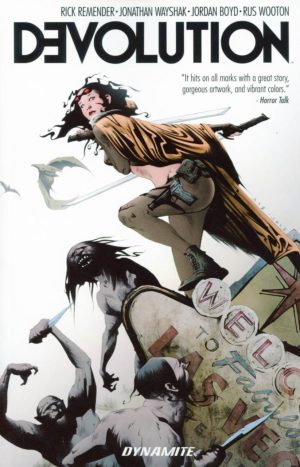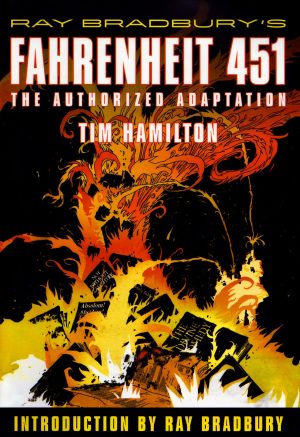Review by Ian Keogh
Margaret Atwood’s horrific 1985 novel concerned a society that has replaced at least a portion of the United States in the near future, exaggerating circumstances as she saw them at the time. Men rule and women are utterly subservient, a twisted form of religious doctrine being used to justify suppression and abuse, and a sense of constant suspicion is cultivated concerning who might be trusted and who might be testing loyalties and behaviour. It’s oppressive and unpleasant, and far greater nastiness remains to be explored, as among many other atrocities crimes can be retroactively applied despite being legal under old laws.
The opening section is test of Renée Nault’s skills at adaptation, as Atwood supplies considerable detail about the reclassification of society required to understand The Handmaid’s Tale. Nault is clear and concise, illustration helping comprehension. We follow a single Handmaid, an ironic classification for someone whose sole task is to give birth to children for assigned men when the number of women capable of doing so is very limited. They dress in a bright red variation of a nun’s covering, and the name Offred itself suggests her nature.
It’s a complex narrative, Offred able to recall how the world was before when she had dreams and freedom, but these memories are intercut with her indoctrination at the hands of ‘Aunts’, explaining the world as it now is, and what is expected of women. This is to repress all aspects of her own personality in the pursuit of what she’s told is now her duty, her dress and actions prescribed. Nault brings everything through beautifully, the sparsity of her art reflecting the sparsity of Offred’s life, her painting only becoming more expansive when viewing the past or brief sojourns of hope. These cleverly foreshadow the future, Offred’s friend Moira having a very different view of women’s freedom in 1985, and how the world of Gilead came about is gradually revealed.
Atwood considered her world and its ramifications down to the social implications for a society of men starved of the company of equals, and each successive revelation builds a profoundly unhappy existence except for those in control. Like ours, it’s a society compromised by hypocrisy and double standards, and the adage about power corrupting is frequently illustrated. The Handmaid’s Tale is an acknowledged classic that’s trickled down as a warning. The television adaptation was screened during the Trump presidency and prompted real life protestors making statements dressed as handmaids. The reason it’s struck such a chord isn’t just because it’s horrific polemic, but because it’s a compulsive drama, and it loses little for being to transferred to comics, Nault’s adaptation faithful and powerful, although she’d surely note it supplements the original rather than replaces it.





